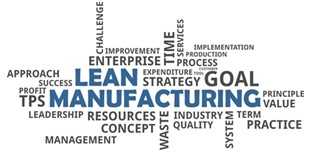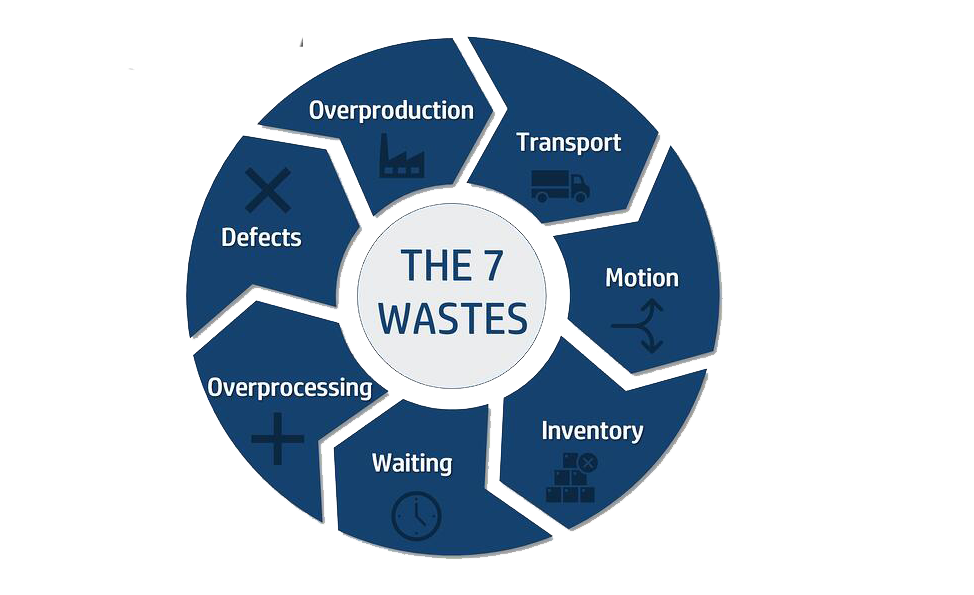Lean Management
“Perfection is not attainable, but if we chase perfection, we can catch excellence”
Vince Lombardi
Lean Management
‘A beneficial Operating model for industrial Companies’
Lean is a way of thinking about creating needed value with fewer resources and less waste. And lean is a practice consisting of continuous experimentation to achieve perfect value with zero waste. Lean think- ing and practice occur together. Lean thinking has a moral compass: respect for the humanity of customers, employees, suppliers, investors, and our communities with the belief that all can and will be better off through lean practices. Lean is not dogmatic. It’s not a rigid, unchanging set of beliefs and methods. Instead, it progresses in the context of specific situations.
- Quality Improvement
- Lead Time Reduction
- Cost Reduction
- Higher ROI with Lower Risk
- Waste Reduction
- Continuous Improvement
The 5 Principles
Value
- Accurately specify the value from the customer’s perspective for both products and services.
- Eliminating waste allows manufacturers to deliver value to customers.
Value Stream
- If the value stream stops moving forward at any point, waste is the inevitable by-product.
- The lean manufacturing principle of flow is about creating a value chain with no interruption in the production process and a state where each activity is fully in step with every other.
- Identify the value stream for products and services and remove any non-value-added waste along the value stream.
Flow
- Per Lean Thinking, “Understanding workflow is essential to the elimination of waste when following lean manufacturing methodologies.
- Make the product and services flow without interruption across the value stream.
Pull
- In Lean Manufacturing, workflow is precise, making sure things are made just in time at the right time in the right amount.
- Lean Manufacturing eliminates the traditional manufacturing approach of producing products based on forecast and replaces it with a pull approach that dictates nothing is made until the customer orders it.
- Flexibility is required along with short delivery cycle times for success.
- Authorize production of products and services based on the pull from the customer.
Perfection
- The Lean Manufacturing Approach strives for perfection, minimizing defects and waste.
- As products are made, the pursuit of perfection continues, making for continuous improvements along each step of the process.
Lean Enterprise
A lean enterprise is organized to keep understanding the customer and their context, i.e., specifying value and looking for better ways to provide it:
- through product and process development,
- during fulfillment from order through production to delivery,
- through the product’s and/or service’s use cycle
- through maintenance and upgrades to recycling

We work hand in hand to
- Specify the value from the customer’s perspective for both products and
- Eliminate waste allowing to deliver value to
- The lean manufacturing principle of flow is about creating a value chain with no interruption in the production process and a state where each activity is fully in step with every
- Identify the value stream for products and services and remove any non-value-added waste along the value stream.
- Understand workflow to eliminate waste when following lean manufacturing
- Make the product flow without interruption across the value
- Make sure things are made just in time at the right time in the right
- Adopt a pull approach or manufacturing to
- Flexibility is required along with short delivery cycle times for
- Strive toward perfection through a continuous improvement

Elements
- Capacity
- Inventory
- Cycle Time
- Lead Time
- Product Development Time
- Space
- First Pass Yield
- Service
Benefits
- Increase 20% by Optimizing Bottlenecks
- Reduction of 40% in stock FG and RM
- Reduction of 50% Throughput Time
- Reduction of 50% Order Fulfilment
- Reduction of 35%
- Reduction of 35% by Applying 5S
- Reduction 15% of Defects
- Delivery Performance 99%

1- Eliminate the 7 Wastes

2- Adopt a TPM Approach
- Equipment Life History
- Process Standardization
- OEE-Overall EquipmentEffectiveness
- Planned Maintenance
3- Apply 5 S Principles
- Sort
- Stablize
- Shine
- Standardize
- Sustain
- Organization
- Orderliness
- Cleanliness
- Adherence
- Self-discipline